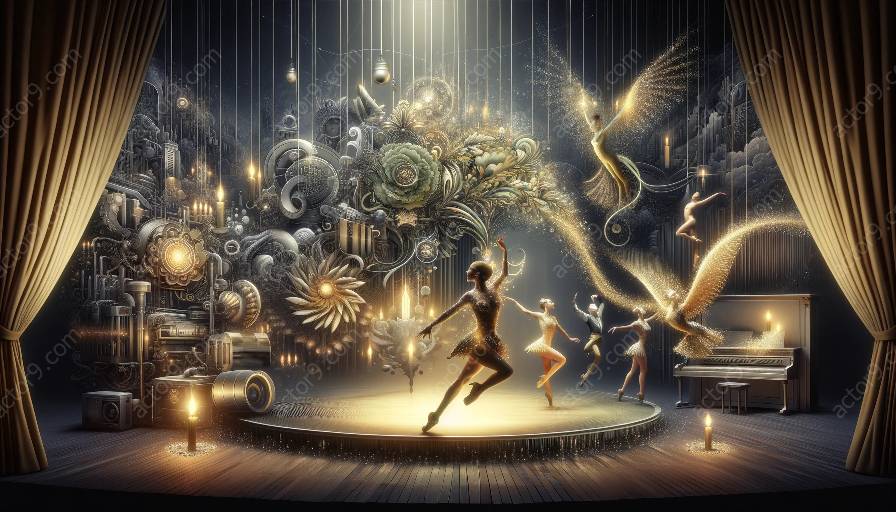Technology has played a significant role in shaping the choreography and movement in modern circus performances, revolutionizing the way artists and acrobats engage with their audiences. This cluster will explore the ways in which technology has influenced the circus arts, from the incorporation of digital innovations into choreography to the development of state-of-the-art equipment for enhancing movement and creating breathtaking spectacles. We'll delve into the intersection of technology and circus arts, examining how these dynamic forces have redefined the boundaries of creativity and expression.
The Intersection of Technology and Circus Arts
In recent years, technology has become an integral part of the circus world, offering new opportunities for artists to push the boundaries of their craft. From cutting-edge lighting and sound systems to advanced rigging and projection mapping, modern circus performances have evolved into immersive experiences that captivate audiences and defy traditional artistic norms. Choreographers and movement directors have embraced technology as a means of expanding their creative possibilities, incorporating digital elements into their routines to create visually stunning and dynamic performances.
Visual Effects and Projection Mapping
One of the most notable ways in which technology has influenced the choreography of modern circus performances is through the use of visual effects and projection mapping. These innovative techniques allow artists to transform the performance space into a canvas for artistic expression, projecting intricate patterns, landscapes, and illusions that interact seamlessly with the performers' movements. By integrating projection mapping into choreography, circus artists can create awe-inspiring visuals that blur the line between reality and imagination, transporting audiences into fantastical worlds where gravity is defied and boundaries are limitless.
Enhanced Movement through Robotics and Automation
Robotic and automated systems have revolutionized the movement dynamics in modern circus performances, enabling artists to execute gravity-defying stunts and acrobatics with precision and grace. By harnessing the power of robotics, performers can push the limits of human movement, seamlessly transitioning between aerial maneuvers, intricate choreography, and dynamic physical feats. The integration of robotics and automation has expanded the creative potential of circus artists, allowing them to explore new forms of expression and athleticism.
The Future of Circus Arts and Technology
As technology continues to advance, the future of circus arts holds exciting prospects for further innovation and collaboration. Virtual reality, augmented reality, and interactive technologies are poised to revolutionize the circus experience, immersing audiences in multisensory landscapes that transcend traditional boundaries of space and time. Choreographers and movement specialists are venturing into uncharted territories, experimenting with new ways to integrate technology into their performances and create unforgettable spectacles that push the boundaries of human achievement.
Conclusion
Technology has undeniably transformed the landscape of contemporary circus arts, influencing choreography and movement in profound ways. From visual effects and projection mapping to robotics and automation, the fusion of technology and circus arts has sparked a renaissance of creativity and innovation in the industry. As we look toward the future, the ongoing synergy between technology and circus arts promises to deliver even more awe-inspiring, boundary-breaking performances that captivate, inspire, and redefine the art of movement and choreography.


































